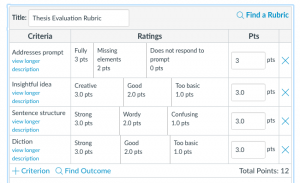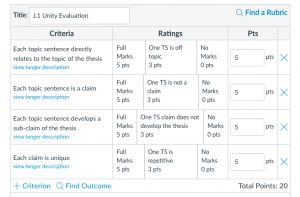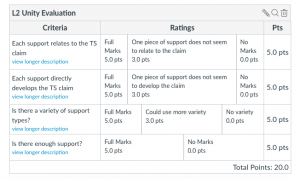I’m going to open with — I like my illegible handwriting in the margins of student papers. I find it difficult to capture the same kind of flourish in the online environment. And, I have, through years of repetitive thinking, convinced myself that my students find the scribbles endearing.
That said, I really do prefer to scratch it out on a physical surface. I find that I can leave a more dynamic comment that way, literally drawing connections between disparate parts of a paper by … drawing. I am also faster at leaving feedback in this format — at least, at this time I am — which our author brought up as a legitimate concern just in case some of us have a hundred or more students making similar mistakes in their writing.
To this end, I have been eyeing the new 12.9-inch iPad Pro, thinking that I might be able to approximate the physical grading in the electronic environment by using a stylus to write on the electronic copies students send. I have been teaching online for 10 years, and I have spent a lot of time waiting for this moment when technology would finally catch up and allow me to return to a pre-technology form of grading. Yet, last spring, during the first leg of this prep, we spent some time considering whether we should be trying to force our on-the-ground practices into the online environment unchanged or whether what we are really talking about is a translation of those practices. In other words, we should be taking our best practices from our years of on-the-ground teaching and re-imagining them in the online environment.
So, I should be asking myself, How does my handwritten feedback translate to the electronic grading environment?
And, I think the answer is — it doesn’t. What does translate is my commitment to substantive feedback. So, what tools are available in the online environment that might not only facilitate the communication of feedback to students but enhance it?
One strategy I will use will be to reduce the amount of time I spend on low-end, repeated comments through macros. If I can auto-fill the comments I make a million times across student papers, like those associated with punctuation and in-text citation formatting, I can spend more time on high-end feedback. I have resisted this move because it has always felt like, well, cheating. However, if I am writing the same comment fifty times in a single grading session, what’s the difference between my repeated handwritten note and the one that the computer fills in automatically?
Legibility.
Another tool that I plan to make use of is combining typed comments with voice comments. The opportunity for this has existed for a while, but not the ease of it. I trained in Canvas in the spring, and I am teaching my first two courses in this CMS this fall, and including voice comments while grading is integrated into this system and easy to use. I like the opportunity to explain a comment I make with a quick verbal elaboration, rather than getting into typing out a lengthy response. It’s what I would do if a student approached me in class to go over a bit of feedback he or she received. I can also see using this feature for my global, end comments on papers. Video feedback is also pretty easy to use through Canvas, but I am not convinced that it will provide something essential that I can’t accomplish with a combination of typed and voice feedback.
I don’t know that these strategies really affect my philosophy about providing feedback so much as begin to satisfy my concerns that feedback in the online environment has the potential to be less than the student needs.



